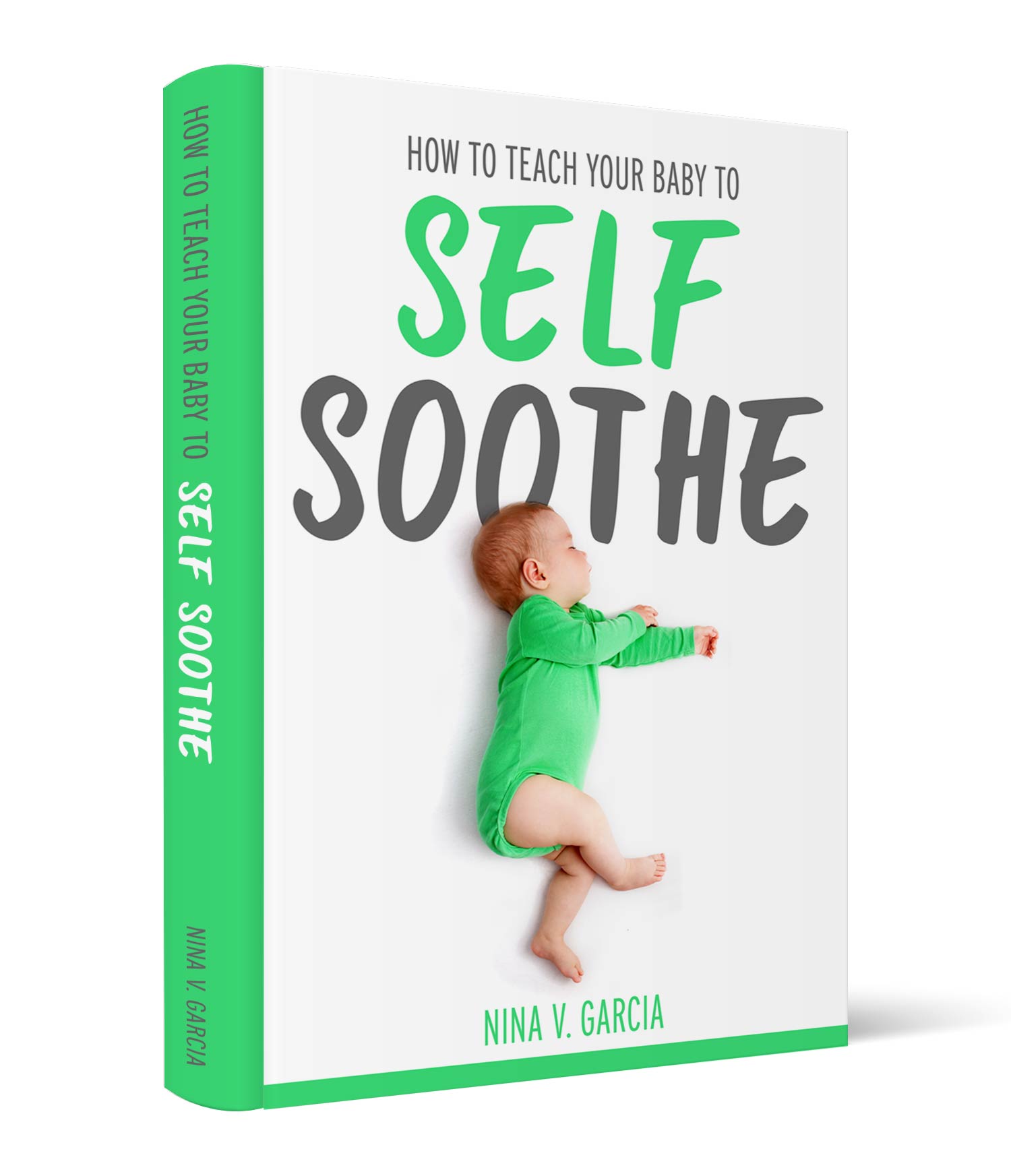What to Do When Your 1 Year Old Wakes Up All the Time
What do you do when your 1 year old wakes up throughout the night, screaming and crying? Learn how to help your child sleep through the night and get the rest you need.

Frequent wake-ups are the norm for babies, but by this stage, you’d think you’d finally have a solid night of sleep.
You’re so sleep-deprived that you can hardly function during the day. You know you’ve been too lenient with rocking your toddler in your arms or feeding him to sleep, and it only seems to be getting worse. Despite following a solid daily routine for a 1 year old and not making big changes to your life, he still wakes up every 2 hours on the dot.
You’re in the right place, friend. In this article, we’ll take a look at a few tactics you can try to get him to sleep in longer stretches at night. Let’s dive in:
Table of Contents
Teach your child to self soothe
Let’s say your toddler is waking up at night and not going back to sleep. You’ve exhausted all your options, and you suspect that he simply doesn’t know how to put himself back to sleep throughout the night.
If so, consider letting him learn to fall asleep on his own, checking on him at set points. By a year old, toddlers should be able to sleep a solid 11-12 hours straight at night.
For instance, if he wakes up crying, make sure that all is fine, but remind him that it’s time to keep sleeping and close the door. Then, set your timer for about 10-15 minutes—if he’s still crying by that point, return to his room and briefly (no more than 30 seconds) let him know it’s time to sleep. Set your timer again, and repeat the process until he has fallen asleep.
Expert tip
If he stands up in the crib, use these check-ins to lay him back down. Don’t feel compelled to put him down every time he stands up because otherwise, you two might be playing a game of back-and-forth.
Free resource: Want a step-by-step plan to teach him to self soothe and sleep through the night? Check out a free chapter of my ebook, How to Teach Your Baby to Self Soothe (works for toddlers, too!). You’ll also get my newsletters, which parents say they LOVE:
“I can relate to everything you have said. You described everything I was feeling. The first thing I have come across on the internet which actually made me feel better.” -Jemma
Avoid unsustainable habits
Sleep habits can be difficult to tackle, don’t you think? On one hand, they work so effectively. Feeding your 1 year old to sleep or putting a pacifier in his mouth works in an instant.
But repeating these habits only reinforces them even further and worsens the 1 year old sleep regression you may be going through. Plus, it makes introducing other, more sustainable ones more difficult. In other words, we can’t expect a child to suddenly fall asleep on his own when all he has ever known has been to be rocked or fed to sleep.
Waking up frequently can simply be his inability to go to sleep in other ways. We all wake up throughout the night, but unlike you and me, he has yet to experience what it’s like to fall back asleep without someone’s help.
Drop unsustainable habits like rocking or feeding to sleep. For instance, move the last feeding to the beginning of the bedtime routine, not the end. Don’t rock him to sleep and instead lay him down awake so he can sleep on his own.
That said, you can still rely on sleep associations that don’t require your help for them to work. For instance, a white noise machine can muffle sudden sounds that could startle him awake, and darkening curtains can block light that might wake him up. Neither one requires you to wake up throughout the night.

Wean from night feedings
Do you still feed your child throughout the night? More than likely, she’s able to take in all her calories during the day, including milk, and drop nighttime feedings completely.
She could be drinking milk throughout the night out of habit rather than hunger, especially if she’s grown used to feeding to fall asleep. Other times, she truly can be hungry and wake up as a result.
Either reason—habit or hunger—consider weaning from night feedings. When she wakes up between sleep cycles, she can learn to put herself to sleep instead of relying on a feed. She’ll also have a full belly and not wake up out of hunger.

Avoid making your child overtired
You’d think that the more exhausted your child is, the quicker she can fall asleep. But for many of us, frequent wake-ups at night are often the result of being overtired during the day.
If you suspect that she’s too tired to sleep through the night, focus on catching up on lost sleep during the day.
For instance, put her down for earlier naps so that she’s more likely to take those naps. Add a short nap in the evening if you feel like her afternoons have stretched too long. Have an earlier bedtime for the next few nights, and check out a few examples of a 1 year old nap schedule to reset her sleep.
Consider it a temporary adjustment to reset her sleep so she’s caught up.

Look for signs of teething
While developmental milestones like teething won’t always be the reason for every wake-up, it’s worth looking for signs of growing pains nonetheless. But how can you tell the difference between teeth and sleep regression?
The clearest way to know is to inspect your child’s gums. She might feel the most pain not when her teeth have already poked through the gums, but right before. Look for red, swollen gums that feel hard.
Besides the gums, be on the lookout for her desire to gnaw and bite, as well as excessive drooling. And finally, teething is often the reason why middle-of-the-night wake-ups happen suddenly.
Pain from acute teething can last for 3-5 days, so she should be able to fall back into her regular long stretches of sleep after that period. Comfort her during this time, knowing that this is when she needs it most. You can also consult with her pediatrician about giving pain medicines, especially if she’s miserable at night.
Experiment with different milk
You may have found that these sudden wake-ups happened after introducing milk to your 1 year old. After all, at 12 months of age, many toddlers can drink regular milk instead of breastmilk or formula.
But it’s possible that she can’t digest cow’s milk well yet, or that it’s causing discomfort during sleep.
If so, experiment with different milk, whether a new brand or an organic version. See what happens if you gradually introduce cow’s milk, ounce by ounce, instead of all at once. Or you could try a toddler formula or almond milk instead of cow’s milk.

Give your child solids close to bedtime
Some kids are waking up at night because of genuine hunger. This is especially common when they’d rather explore and play during the day than sit down and eat a meal. At a year old, solids become the main source of nutrition, with breastmilk, formula, or cow’s milk are now beverages.
That’s why you might find luck in stretching your child’s sleep by giving him food closer to bedtime. This could be as simple as a bowl of baby cereal a few minutes before bed (and brushing, of course!). Or you could bump dinner later—from 5pm to, say, 6:30pm.
Another option is to give him more food throughout the day, especially if he’s hungry at meal times. For instance, you can offer seconds if he finishes a meal, or give smaller snacks but more frequently throughout the day.
The bottom line
After a year, this is when many of us hope to finally turn a corner and get a good night’s sleep. Except, as you’ve seen, this isn’t always the case. Thankfully, you can do plenty to address the issue. No more sleep deprivation, friend—especially a whole year later!
Get more tips:
- How To Stop Your Toddler Waking At 5am
- What to Do When Your Toddler Wakes Up Crying Every Morning
- 15 Examples of a 1 Year Old Eating Schedule
- What to Do When Your Toddler Is Hysterical at Bedtime
- Easy Gross Motor Activities for 1 Year Olds
Don’t forget: Join my newsletter and grab 5 Mistakes That Keep Your Baby from Self Soothing—at no cost to you:

